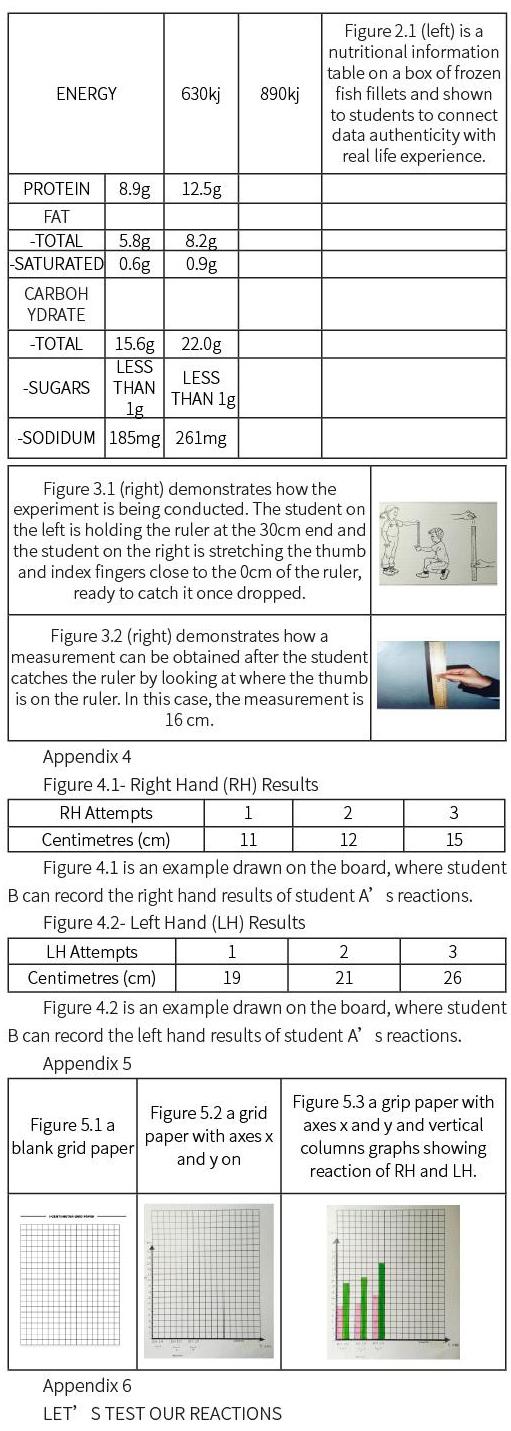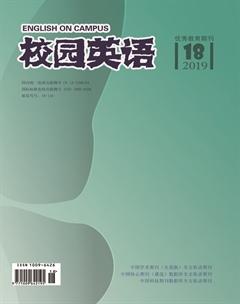Integrating Data Strand of Maths with Key Learning Areas Subjects to Develop Mathematical Thinking



【Abstract】The article provides and discusses a 50 minutes numeracy lesson which links the data strand in Mathematics with the Key Learning Areas (KLAs) subjects of NSW Syllabuses, Australia. The article is comprised of three parts. Part One consists of a detailed data lesson plan. Part Two is a reflection, discussing the strengths and weaknesses of the lesson. Part Three is an explanation of the resources for the lesson, and this part is contained in 6 appendices.
【Key words】Key Learning Areas (KLAs); Mathematics; Personal Development Health and Physical Education (PDHPE); Data Strand; Graph; Table
【作者簡介】杨沁霏(1982-),汉族,重庆人,重庆邮电大学移通学院,外国语言文学系,讲师,硕士研究生,研究方向:第二语言习得、教学法、学习动机等;Suzanne Lawson, 澳大利亚伍伦贡大学,教育专业硕士研究生,研究领域:语言习得、教育管理等。
1. Introduction
The lesson has been planned for Stage 2 (Year 3 to Year 4) and it focuses on the data strand of primary school Mathematics syllabus in NSW (New South Wales) Australia. Students have conducted surveys, and gained preliminary experience viewing data, drawing and interpreting picture graphs in previous lessons.
The focus of this lesson is to interpret and organise data, and represent them in vertical column graphs. Students are expected to, after this lesson, construct vertical column graphs independently and confidently. As Zevenbergen (2004, p.67) mentioned, for teachers, it is important to consider the learning continuum by carefully planning lessons with previous and subsequent content in mind.
Part One: An Integrated Data Lesson(As shown in Table 1)
Part Two : Teaching Reflection
The aforementioned lesson was selected as a fun, practical and well-planned way to assist students to collect and present data, and learn to interpret them in tables and graphs. Booker (2004, pp.506-530) mentioned that the data-related math lesson should have a clear purpose of assisting students to ‘gain levels of numeracy appropriate for informed participation in the data-filled society in which we live.
Strengths
The lesson was carefully planned with the aim of providing quality teaching, which strives to maximise the learning opportunities for students during the lesson and includes activities which are designed to produce the best of the outcomes (Zevengergen et. al, 2004, pp.63-64).
The lesson aims to engage students by studying the real-life data and doing the hands-on experiments. When students are engaged, they are most likely to ‘display sustained interest and attention, to enable learning to occur (NSW, DET. 2003, p.13)
The teaching and learning occurs in a positive and secure classroom environment where social and academic supports are of high priorities. The teacher encourages students to assist each other. Also, the teacher ensures students that the classroom is free from negative personal comments (NSW. DET 2003, p.13). For example, teacher models that to drop the ball occasionally and to have a slower reaction time are common.
To spend time in a content orientation prior to the lesson is essential because it helps the teacher ‘to consider the interests, needs and background knowledge of the students, and make the learning planning effective, which ‘recognises what students bring to the learning situation (Zevenbergen, 2004, p.67). Additionally, the teacher provides a real life example of data that facilitates the connectedness between the classroom and the students lives outside the school (NSW DET 2003, p.15)
Another strength is that the lesson provides knowledge connectedness which integrates the Key Learning Areas (KLAs) subjects of Mathematics, Science and Technology (S&T) with Personal Development, Health and Physical Education (PDHPE). Students are expected to develop a more “meaningful understanding of central ideas of these subjects and the relationships between those central ideas”in order to ensure that they gain deep learning experiences. (NSW DET 2003, p.11)
Weaknesses
A potential weakness is effectively managing time to complete all of the activities within fifty minutes. Although it is extremely important to build on students background knowledge and some revisions are required, it is also necessary to get through the extremely crowded mathematics curriculum. Therefore, getting the balance right on the time-and-content appears to be a major challenge (Zevenbergen et. Al, 2004, p.65)
Another difficulty is to ensure that the lesson caters for every students individual needs. However, if, for example, one of the students cannot catch the ruler at all for numerous attempts, and all data are recorded as ‘x, the student will have nothing to graph and may become embarrassed and disinterested. If the teacher anticipates that this problem may arise, the teacher needs to ‘alleviate the problem by having numbers ready for the student to table and graph as ‘his or her own data, or by simply providing an alternative activity appropriate for the student. (Carnellor, 2004)
Part Three: Appendices
This Part is contained with appendices used throughout the lesson.

The teacher uses Our Favourite Foods (Figure 1.1) to provide a background information before asking students guided questions to assesses how well they have understood the previously learned content, and to checks if students can interpret data presented in tables correctly.

The teacher draws Figure 1.2 on the board before the experiment 1 demonstration, and students can also copy it into their worksheets to record their experiment results.




References:
[1]Booker, G,Bond,D,Sparrow, L& Swan. Teaching Primary Mathematics, 3rdEd, Pearson Education Australia[J]. Frenchs Forest, NSW,2004.
[2]Carenellor, Y. Encouraging Mathematical Success for Children with Learning Difficulties, Social Science Press, Southbank, VIC,2004.
[3]Hoban, G & S. Primary Science & Technology: Teachers Resource with Instructional Support and Blackline Masters[J]. Martin Education, Cammeray NSW,1992:126-127.
[4]NSW Board of Studies. Mathematics K-6 Syllabus with Foundations Statements[J]. NSW Board of Studies, Sydney, NSW, 2006.
[5]NSW Board of Studies. Mathematics K-6 Sample Units of Work[J]. NSW Board of Studies, Sydney NSW,2005.
[6]NSW Department of Education and Training, Professional Support and Curriculum Directorate. Quality Teaching in NSW Public Schools: Discussion Paper[J]. NSW Department of Education and Training, Sydney NSW,2003.
[7]Tickle, B, Burnett, J & Irons, C. Go Maths, Stage 2B, ORIGO Education[J]. Narangba, Qld, Unit,2007,10.
[8]Tickle, B, Burnett, J & Irons, C. Go Maths, Stage 2B, ORIGO Education[J]. Narangba, Qld, Unit,2007,45.
[9]Zevenbergen, R, Dole, S & Wrights, R, Teaching Mathematics in Primary Schools[J]. Allen & Unwin, Crows Nest, NSW,2004.

